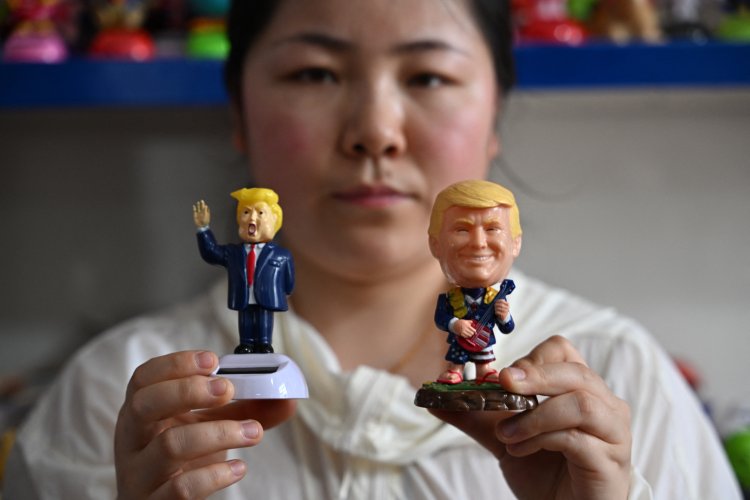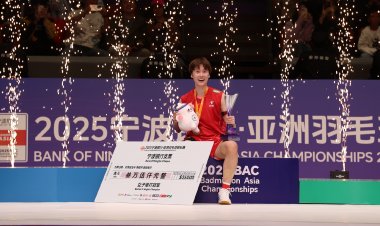Tariff exemptions highlight the frail US stance in the trade war with China: ‘This is going to get really ugly’
The article discusses how, aside from its electronics exceptions, the United States has shown a greater willingness to be flexible compared to China.

Top administration officials spent the weekend defending a carve-out for consumer electronics from the staggering 145 percent tariffs imposed on China last week. They argued that this carve-out was not an exemption or a rollback of policy, as those electronics still face a separate 20 percent tariff on Chinese goods, and some components may encounter sector-specific tariffs in the future.
However, some allies of the White House see these exceptions as signs of the administration’s relatively vulnerable position in the trade conflict. China has spent years preparing for a possible escalation of trade tensions, and the carve-outs highlight a dilemma for the U.S.: while new tariffs aim to shift manufacturing back to the U.S., they are particularly harmful to American manufacturers who rely heavily on Chinese parts.
Thus far, the U.S. has shown a willingness to compromise, more so than China, in this escalating confrontation.
“Xi Jinping will not back down,” said a former Trump administration official, who, like others in this story, was granted anonymity to provide their honest assessment of the U.S.-China relationship, adding that “the CCP will lose confidence in him” if he does, using the acronym for the ruling Chinese Communist Party. “This is going to get really ugly,” the former official warned.
The stalemate reflects the careful preparations China made for this confrontation long before Trump announced his so-called “Liberation Day” tariffs earlier this month. Beijing’s quick countermeasures demonstrate this readiness, including a combination of tariffs, export restrictions on vital minerals crucial for U.S. industries, and targeting American companies with investigations or sanctions that target multiple economic pain points.
White House spokesperson Kush Desai stated that Trump is employing a “nuanced, strategic approach to combat China’s unfair trade practices and reshore the high-tech manufacturing that is critical to our national and economic security” by using both reciprocal and sector-based tariffs.
“This approach will build on the hundreds of billions of dollars’ worth of electronics and semiconductor investment commitments that the administration has secured without letting China exploit loopholes to keep undermining American industries and workers,” Desai explained. He asserted that anyone not directly involved with the president or his trade team has “no idea what they’re talking about.”
Nevertheless, the exclusion of key tech products has frustrated some members of Trump’s inner circle, who anticipated that any sector-specific tariffs on semiconductors and possibly other electronic products would be significantly lower than the 145 percent tariffs imposed on China.
"You have to be firm and consistent with the policy,” remarked someone close to the White House. “And a 25 percent tariff is going to do absolutely nothing,” they said, referencing the figure Trump suggested in February for future semiconductor tariffs.
Currently, the upcoming tariffs are expected to only affect semiconductors, though the White House could broaden them to the entire “electronics supply chain,” as Trump mentioned in a recent Truth Social post. Over the weekend, Trump indicated he would announce the tariff rate for semiconductors within the next week, without specifying the timing or rate on Monday.
These impending measures, along with Beijing’s recognition of Trump’s sensitivity to stock and bond market fluctuations caused by tariffs, are providing Chinese policymakers confidence that they can wait for Trump to initiate talks aimed at reducing trade tensions.
“I spent most of March in China prior to the tariff announcement and it was clear the Chinese aren’t going to pay tribute to another emperor,” observed Rick Waters, former inaugural coordinator of the State Department’s China House and now director at Carnegie China, a branch of the centrist think tank the Carnegie Endowment for International Peace. “It’s now a waiting game to see who blinks first — Xi would probably take Trump’s call but won’t pay upfront or initiate. And lower-level channels are unable to accomplish much without some area of consensus at the top.”
However, the White House has firmly maintained that Trump will not be the one making the first call to Xi.
“We view [Trump] making a call to President Xi as an extension of an olive branch,” stated a person from the Trump administration. “They’re a bad actor. We won’t be extending that branch.”
Another official from the White House suggested that Trump’s carve-outs, criticized as a sign of weakness compared to China, are in fact a strategic move to “toe the line” between pressuring tech companies to relocate manufacturing to the U.S. and alleviating the impact on American consumers. Tariffs on semiconductors could lead to price hikes across various products that depend on this technology, such as cars, computers, toys, and appliances.
“Two things can be true at the same time. [Trump] recognizes that it will take time to shore up these critical supply chains, which is why he's been pressuring technology and chip manufacturers to invest and start developing as soon as possible,” they elaborated.
Trump continues to extend conciliatory gestures toward Xi, telling reporters on Monday that he doesn’t “blame China at all” for the U.S.’s economic reliance on the nation, and expressing his respect for the Chinese president. Over the weekend, he referred to Xi as a “very good leader, very smart leader” of a “very big great country.”
Some of Trump’s allies interpret these remarks as indicative of a “keep your friends close but your enemies closer” strategy, suggesting he may be preparing to forge some sort of agreement with China.
However, Beijing remains resolute.
“The U.S. uses tariffs as a weapon to exert maximum pressure and seek selfish gains, and puts its own interests over the public good of the international community,” stated Chinese Foreign Ministry spokesperson Lin Jian on Monday. He added that rolling back China’s 125 percent tariff on U.S. imports will require the Trump administration to “resolve issues through dialogue on the basis of equality, respect and mutual benefit.”
The White House is also entering trade negotiations with several Southeast Asian countries—Vietnam, Japan, South Korea, and India—that it views as not only vital trading partners but also strategically important in countering China.
The administration is focused on addressing what it claims are significant illegal shipments that effectively launder Chinese goods through third countries like Vietnam and Cambodia. It perceives these nations as potential alternative trading partners as it aims to reduce its dependence on China and shift manufacturing back to the U.S.
In a counter to this strategy, Xi is embarking on state visits to Vietnam, Cambodia, and Malaysia this week, promoting China as a more reliable trading partner amidst the expansion of Trump’s trade war. His primary message to Vietnamese Prime Minister Pham Minh Chinh, as reported by Chinese state media, was that the two nations “should ensure a smooth flow of trade.” Xi did not mention the U.S. or Trump, but his hosts in Hanoi could not ignore Xi’s implicit criticism of Trump, urging Vietnam to collaborate with China in opposing “hegemonism, unilateralism, and protectionism.”
Trump caught the sentiment. He remarked that the Xi and Pham meeting is fundamentally about “trying to figure out, 'How do we screw the United States of America?’”
The U.S. has long been wary of its reliance on China for critical supply chains, including pharmaceuticals and electronics, yet shifting manufacturing back to the U.S. is expected to take years as companies establish operations in places like Arizona and Texas.
Some corporations are beginning to make that transition. For instance, Nvidia announced a $500 million investment to produce AI supercomputers entirely in the U.S. for the first time, following the implementation of Trump’s 32 percent reciprocal tariffs on Taiwan last week. This follows other investments like Taiwan Semiconductor Manufacturing’s $100 billion commitment to U.S. chip manufacturing and Apple’s $500 billion investment in expanding facilities in the U.S.
However, while these shifts in tariff policy are welcomed by many businesses and the financial market, they leave some companies feeling sidelined.
After months of insisting that there would be no exclusions or exemptions to his various tariffs, Trump recently appeared to indicate that he might allow some exceptions “for obvious reasons,” while reasserting the baseline 10 percent tariffs. Later that same day, Customs and Border Patrol released a list of products exempt from tariffs, including certain electronics.
On Sunday, Trump acknowledged that "you have to show a certain flexibility" in negotiations. Speaking to reporters in the Oval Office on Monday, he suggested potential temporary exceptions on tariffs to assist car companies seeking to relocate manufacturing to the U.S. after imposing 25 percent tariffs on automotive imports. Commerce Secretary Howard Lutnick indicated on ABC’s “This Week” Sunday that the semiconductor exemptions would likely be temporary.
“Look, I'm a very flexible person,” Trump said in the Oval Office on Monday. “I don't change my mind — but I'm flexible."
Frederick R Cook for TROIB News
Discover more Science and Technology news updates in TROIB Sci-Tech












